Bedlasky
International Hazard
    
Posts: 1219
Registered: 15-4-2019
Location: Period 5, group 6
Member Is Offline
Mood: Volatile
|
|
Selenium chemistry in HCl
Hi.
I played today with selenium chemistry in HCl. I followed these two papers:
https://sci-hub.se/https://pubs.acs.org/doi/pdf/10.1021/ic50...
https://sci-hub.se/https://pubs.acs.org/doi/10.1021/ic00153a...
I tried to dissolve Na2SeO3 in 36% and 40% HCl. In both cases pale yellow solution of SeOCl2.H2O (or maybe Se(OH)2Cl2) was formed.
I put test with solution in 40% HCl in to the chilled EtOH bath (5°C) and bubbled some HCl gas through it. Solution became more yellow (but I
wouldn't call it intense yellow like authors of the first paper). This should be solution containing SeOCl2.H2O, [SeCl5]- and [SeCl6]2- in equilibrium
([SeCl5]- is major component).
I added some elemental Se in to the solution of Na2SeO3 in 36% HCl a heated it up in hot water bath. Selenium dissolved to form orange solution,
mixture of Se2Cl2 and SeCl2 (or it could be HOSe-SeCl and HOSeCl, true nature of these species isn't investigated in the second paper). Orange
solution hydrolyzed to red selenium and selenic acid when poured in to the water.
If you want to recreate these experiments, do it in well ventilated area - firstly due to Se aerosols and secondly Se2Cl2 could be slightly volatile.
I found ring of red selenium at the end of the test tube which could be formed by hydrolysis of Se2Cl2 in most air (but this isn't 100% verified). I
did some tests when heating solution of Se2Cl2/SeCl2 in hot water bath - I put paper tissue soaked in water and paper tissue soaked in Na2S2O3
solution at the end of the test tube. No red selenium was formed on the surface of the paper tissue, so it probably isn't volatile (or maybe very
slightly volatile).
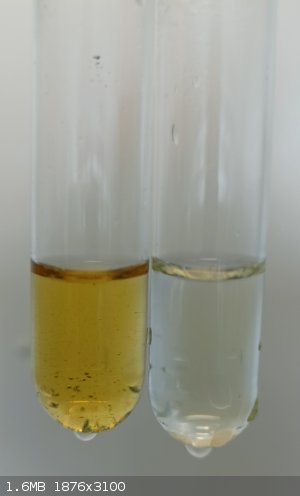
Se2Cl2/SeCl2 on the right, SeOCl2.H2O on the left
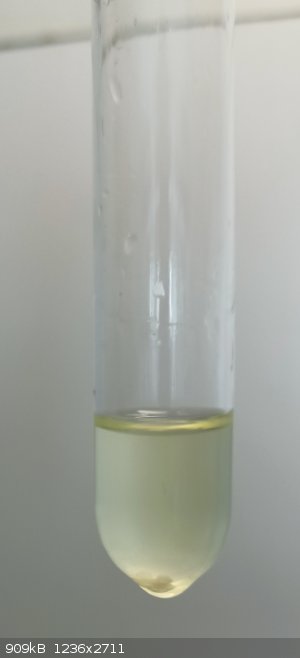
[SeCl5]-

Se2Cl2/SeCl2
[Edited on 15-7-2023 by Bedlasky]
|
|
|
j_sum1
Administrator
       
Posts: 6230
Registered: 4-10-2014
Location: Unmoved
Member Is Offline
Mood: Organised
|
|
I don't have much to say except that you should watch the two recent videos on selenium by Chemical Force. I think you will find these interesting and
instructive. (Not to mention beautiful.)
|
|
|
Bedlasky
International Hazard
    
Posts: 1219
Registered: 15-4-2019
Location: Period 5, group 6
Member Is Offline
Mood: Volatile
|
|
Quote: Originally posted by j_sum1  | | I don't have much to say except that you should watch the two recent videos on selenium by Chemical Force. I think you will find these interesting and
instructive. (Not to mention beautiful.) |
I saw that video. Very nice reactions. I especially love colour of burning selenium, it really differs from colour of burning sulfur.
|
|
|
Bedlasky
International Hazard
    
Posts: 1219
Registered: 15-4-2019
Location: Period 5, group 6
Member Is Offline
Mood: Volatile
|
|
Today I tried reaction between sodium selenate and 48% HBr. This produce orange solution of SeOBr2.H2O.
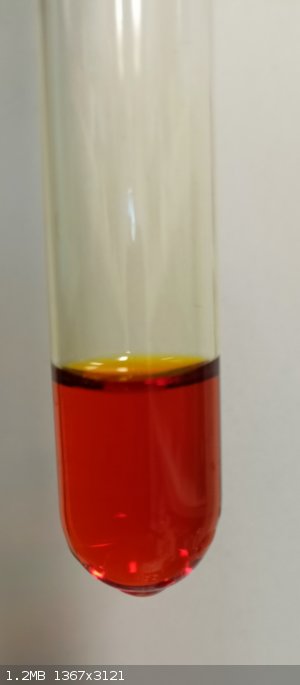
Than I tried to bubbled HBr gas through solution. Solution darkened. I don't know if Se(IV) produce similar complexes like in HCl ([SeBr5]-) or if
this is just shift in equillibrium which favors formation of more SeOBr2.H2O. Part of coloration would come from bromine, because I use just quick
setup using KBr and 96% H2SO4, which produce bromine contaminated HBr gas. I dissolved some elemental selenium in this mixture - when I added water to
it, it separates in to two layers - the bottom layer was probably Se2Br2 formed by reaction of Se with Br2. When I tried dissolve selenium in fresh
solution of SeOBr2 in 48% HBr, selenium almost didn't dissolve. Maybe stronger heating is needed? I have two different results - in first try little
bit selenium dissolve, which later precipitated after dilution with water. In the second attempt nothing dissolve, but my water bath was colder than
before. Maybe I'll give this another try.
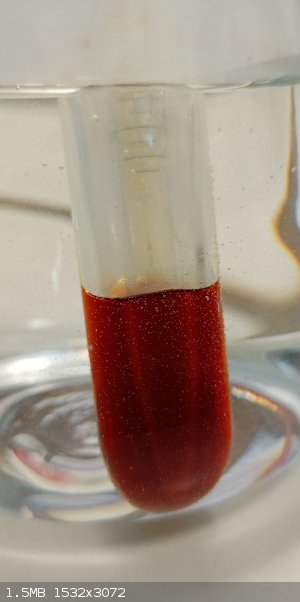 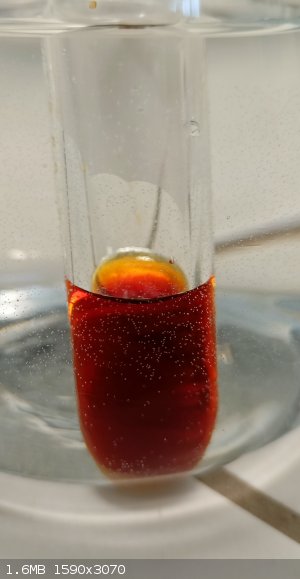
[Edited on 23-7-2023 by Bedlasky]
|
|
|
Fery
National Hazard
   
Posts: 990
Registered: 27-8-2019
Location: Czechoslovakia
Member Is Offline
|
|
Nice experiments Bedlasky!
Gaseous HBr is not so easy to produce. Maybe dehydrating 48% HBr with P4O10? Or distilling KBr+H3PO4? Certainly also tetrahydronaphthalene + Br2 but
that could be still contaminated with Br2. But very likely you can easily drive out the traces of Br2 by simply boiling the solution for short time
(traces of heavy red bromine vapor would be visible above the mixture).
|
|
|
Bedlasky
International Hazard
    
Posts: 1219
Registered: 15-4-2019
Location: Period 5, group 6
Member Is Offline
Mood: Volatile
|
|
If I needed pure HBr, I would heat H3PO4 with KBr. I just needed something quick and simple, so I used this dirty method.
|
|
|
teodor
National Hazard
   
Posts: 872
Registered: 28-6-2019
Location: Heerenveen
Member Is Offline
|
|
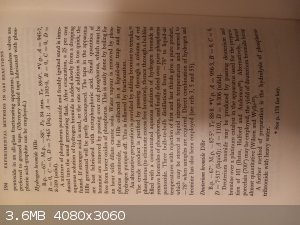
|
|
|
woelen
Super Administrator
        
Posts: 7977
Registered: 20-8-2005
Location: Netherlands
Member Is Offline
Mood: interested
|
|
For me, heating NaBr or KBr in 85% H3PO4 worked quite well. This produces humid HBr (fuming), perfectly suitable for the experiments, described here.
You should not heat strongly, because that damages the glass. But at 100 C or so, the glass perfectly withstands the action of the phosphoric acid. In
this reaction, no Br2 is formed at all.
|
|
|